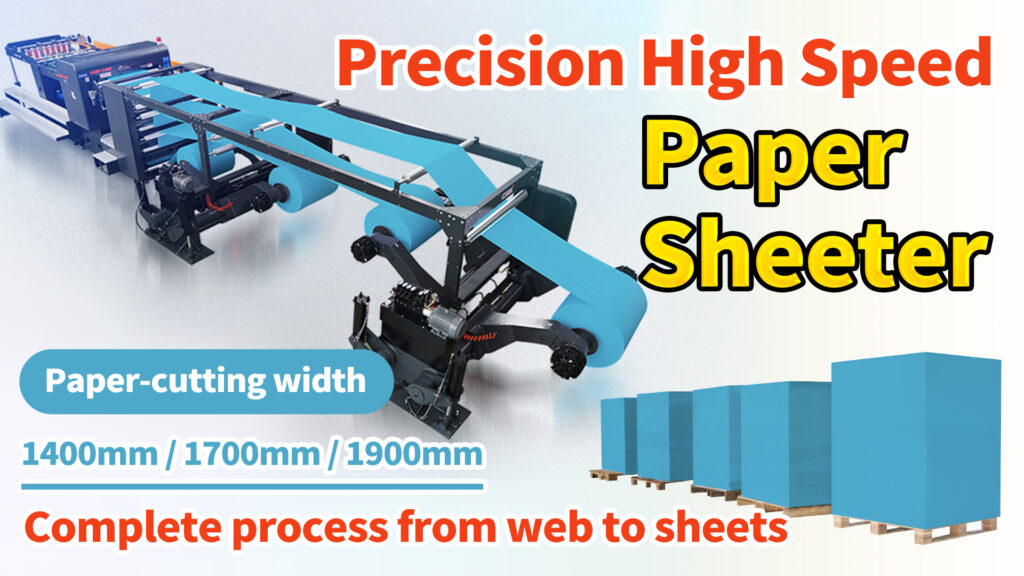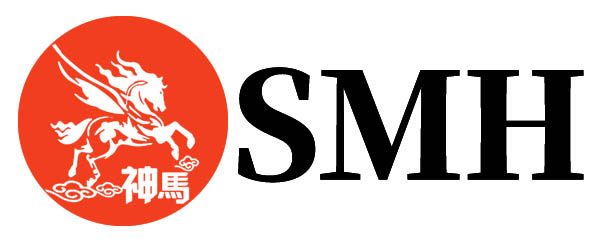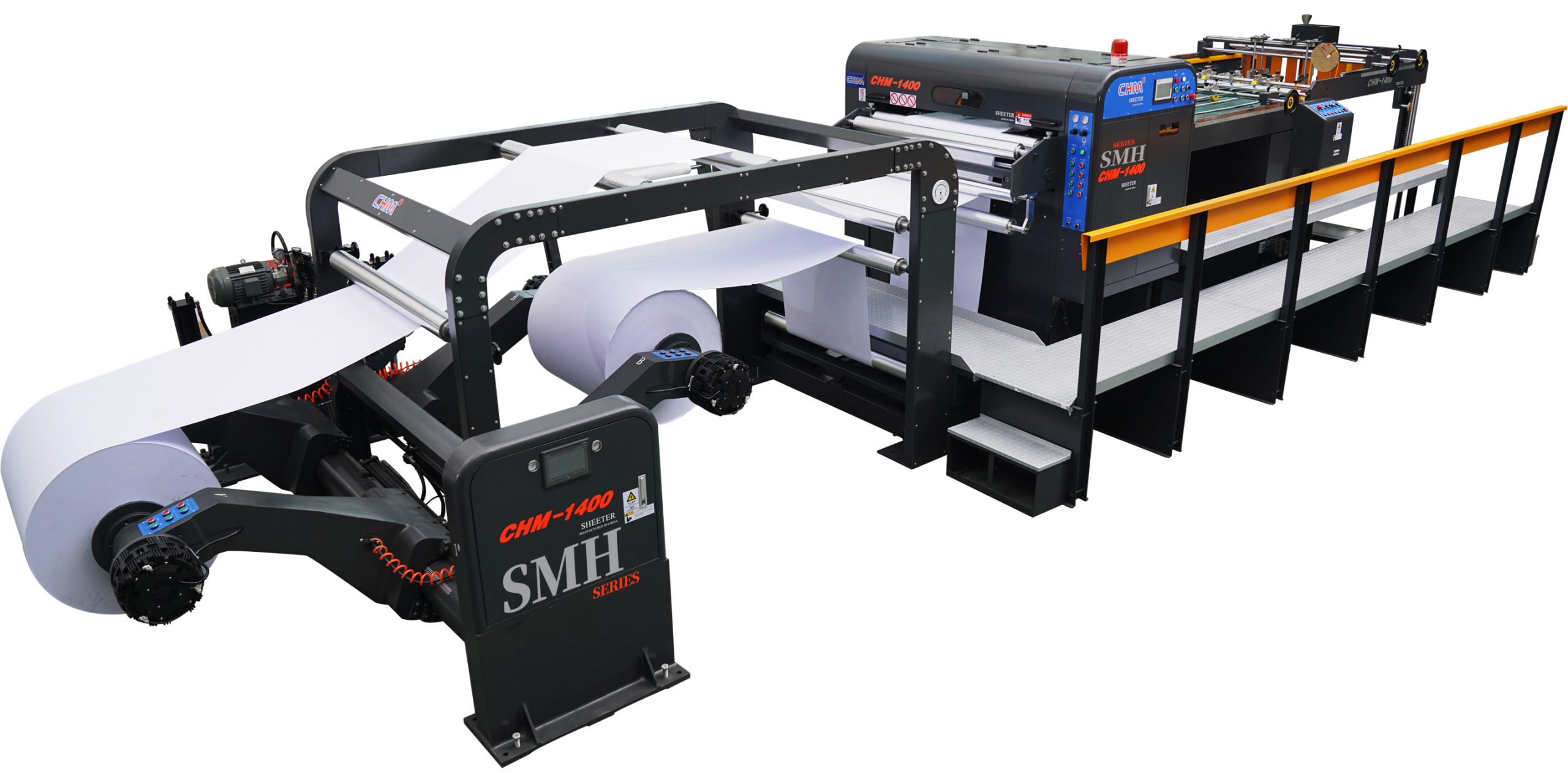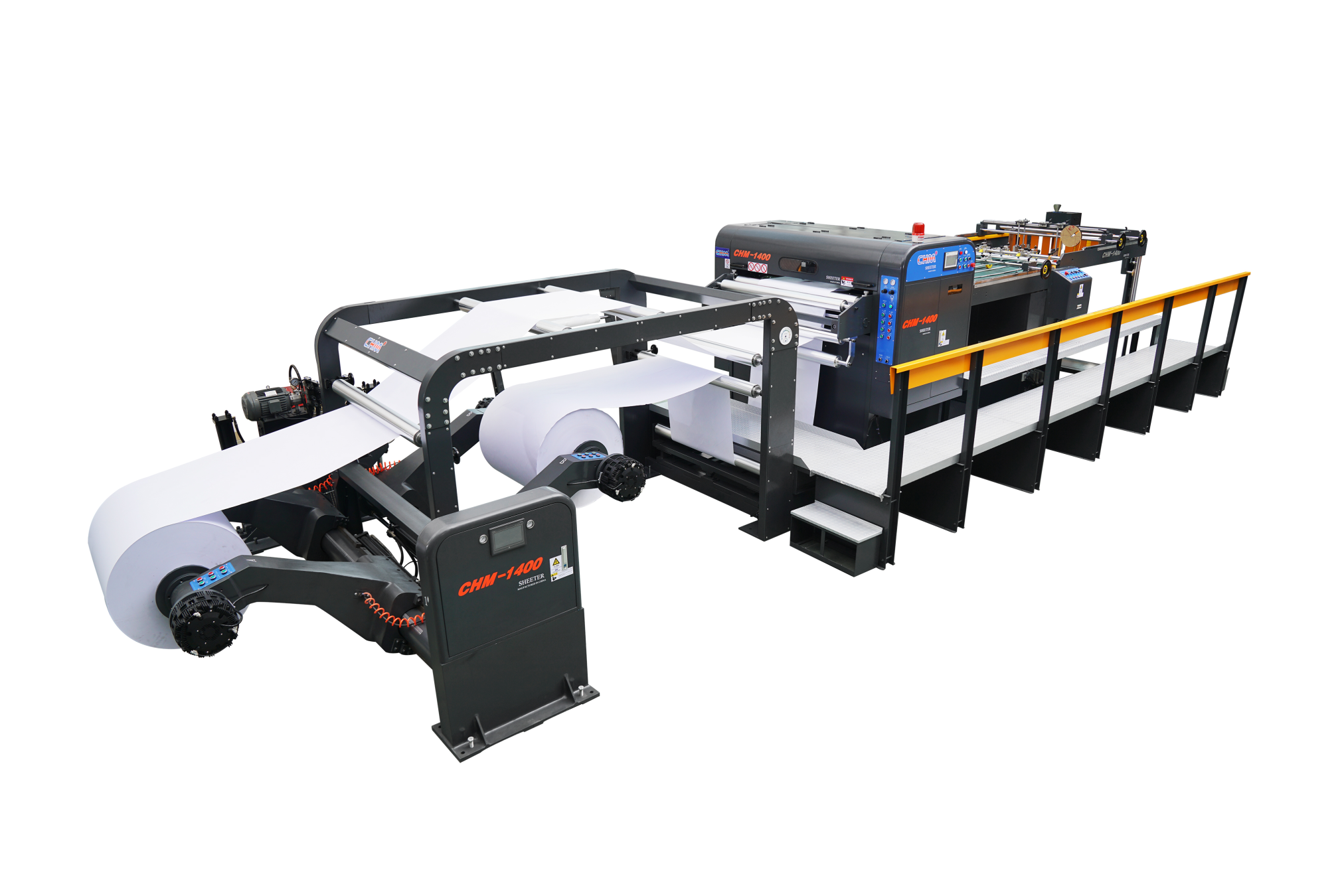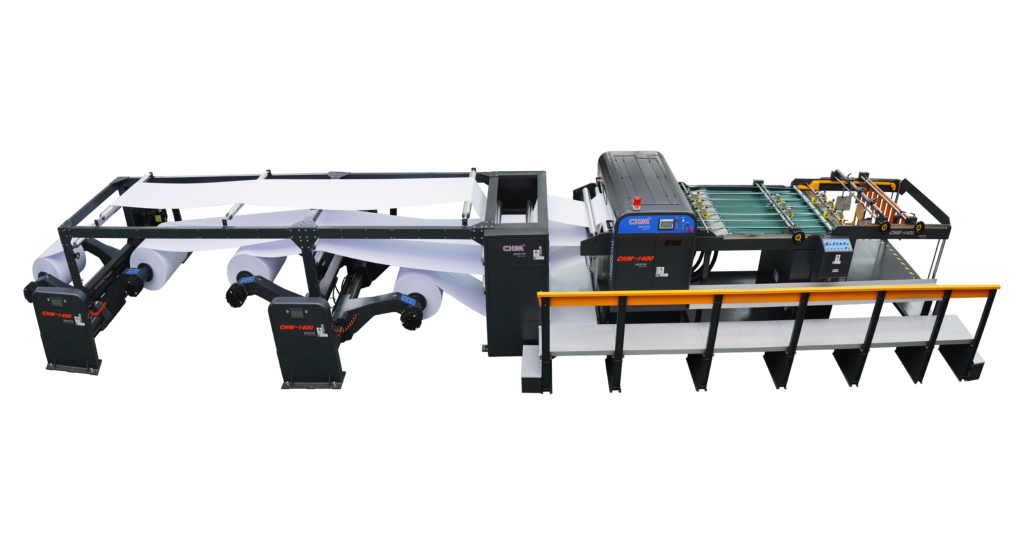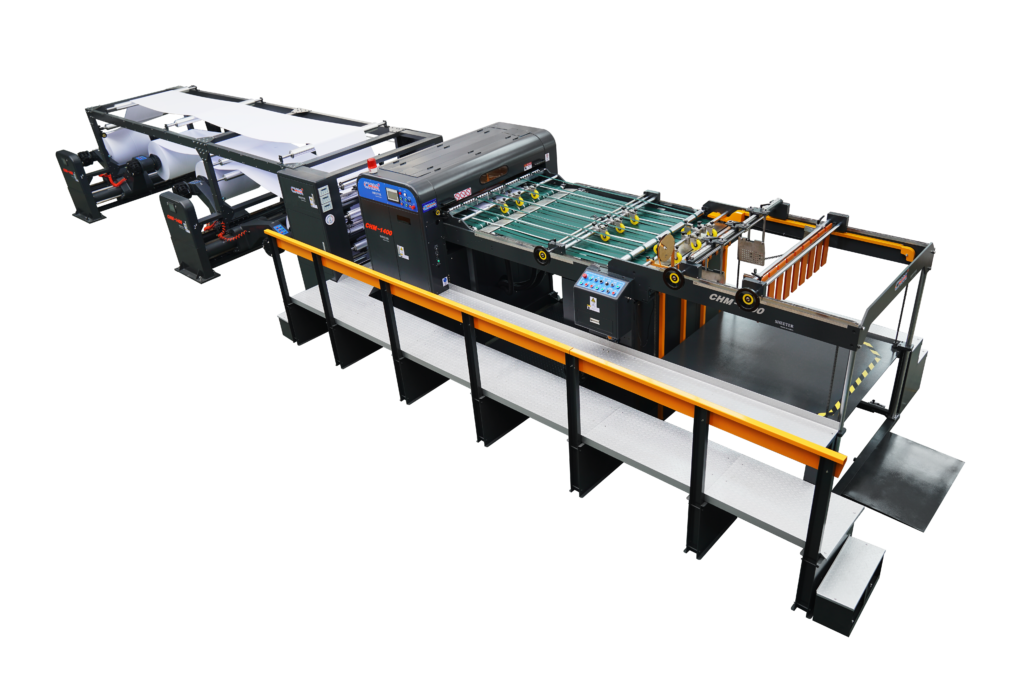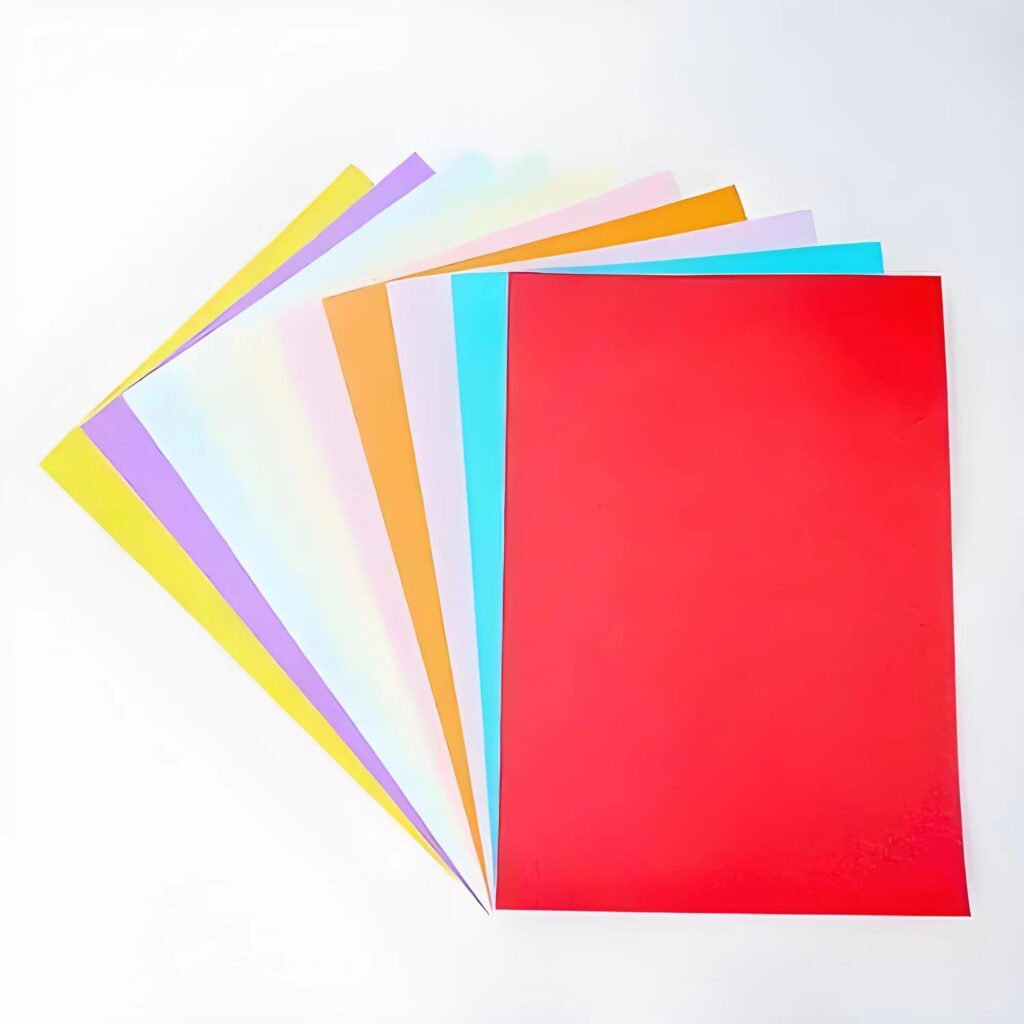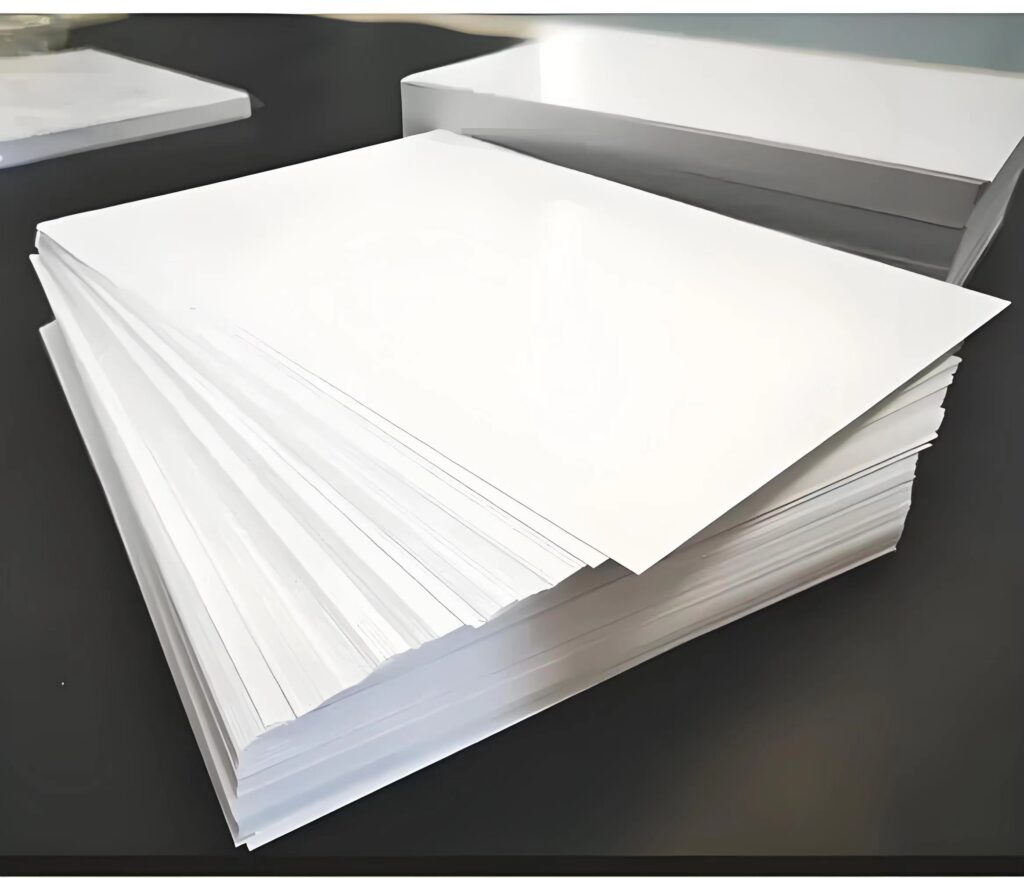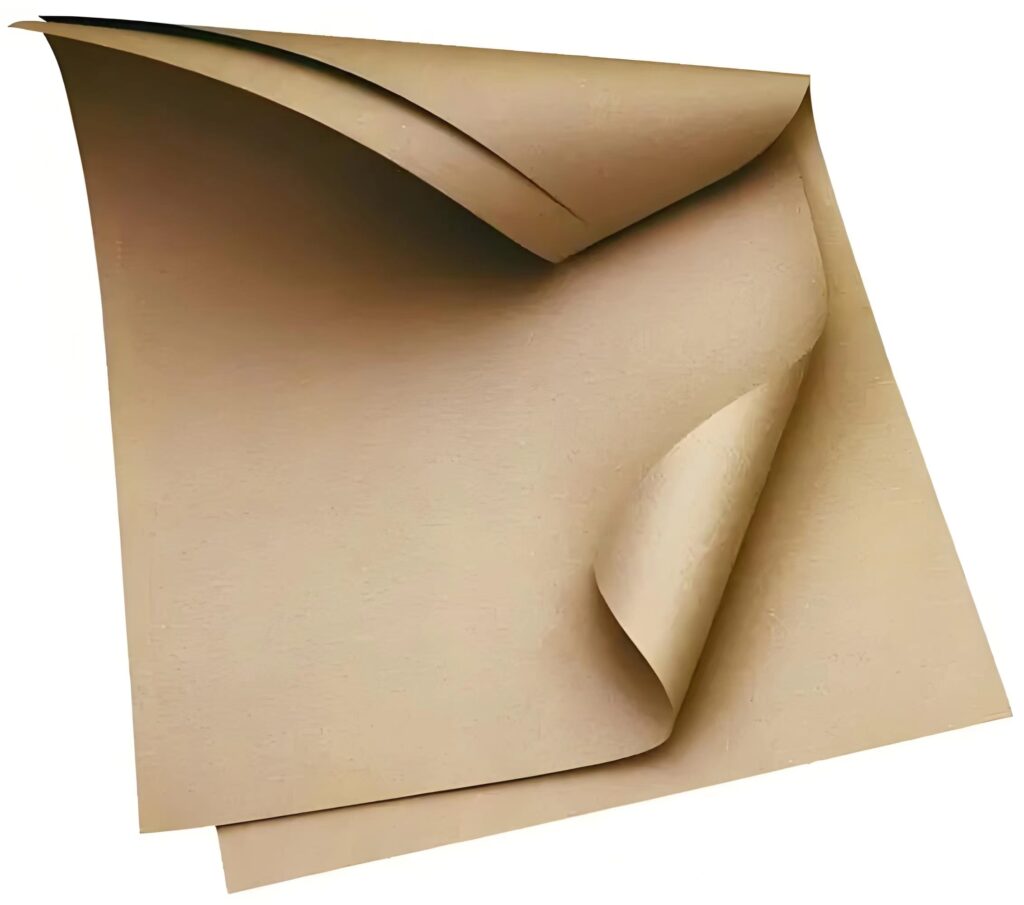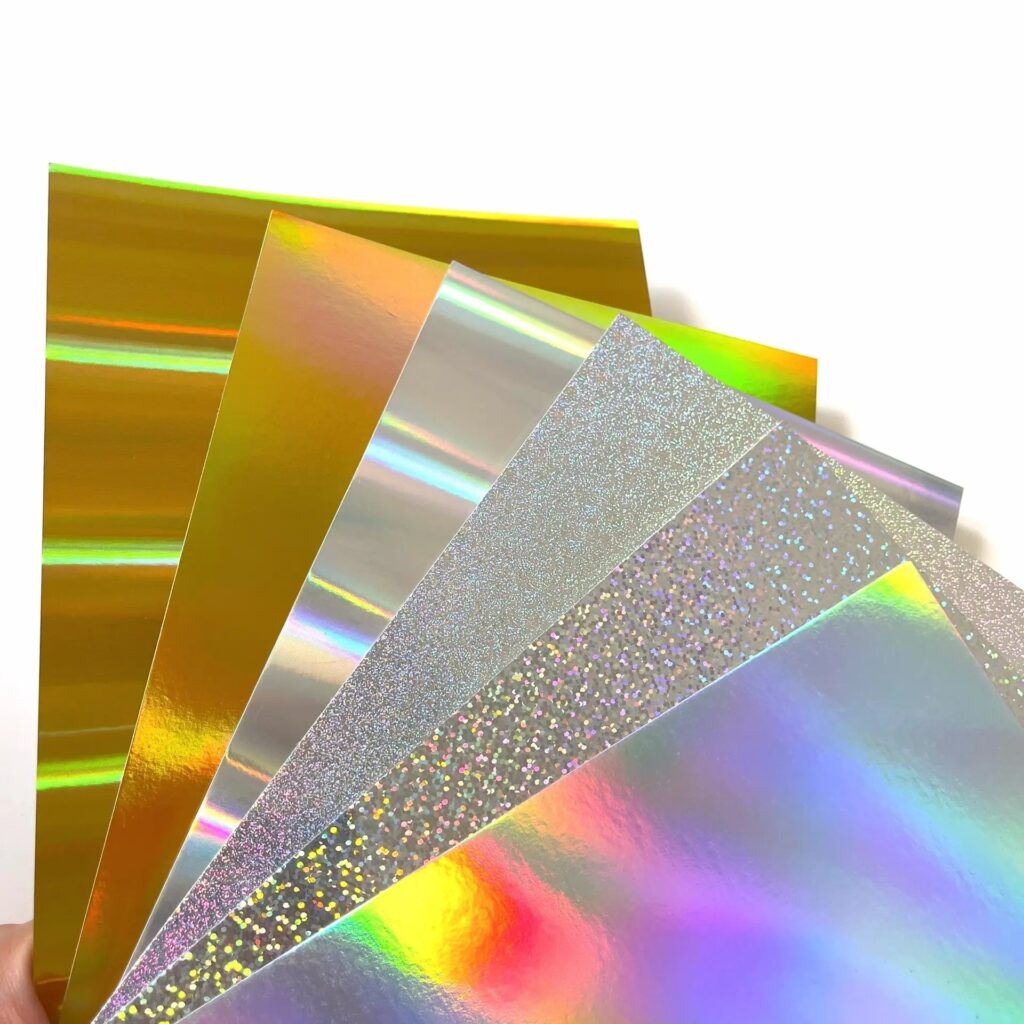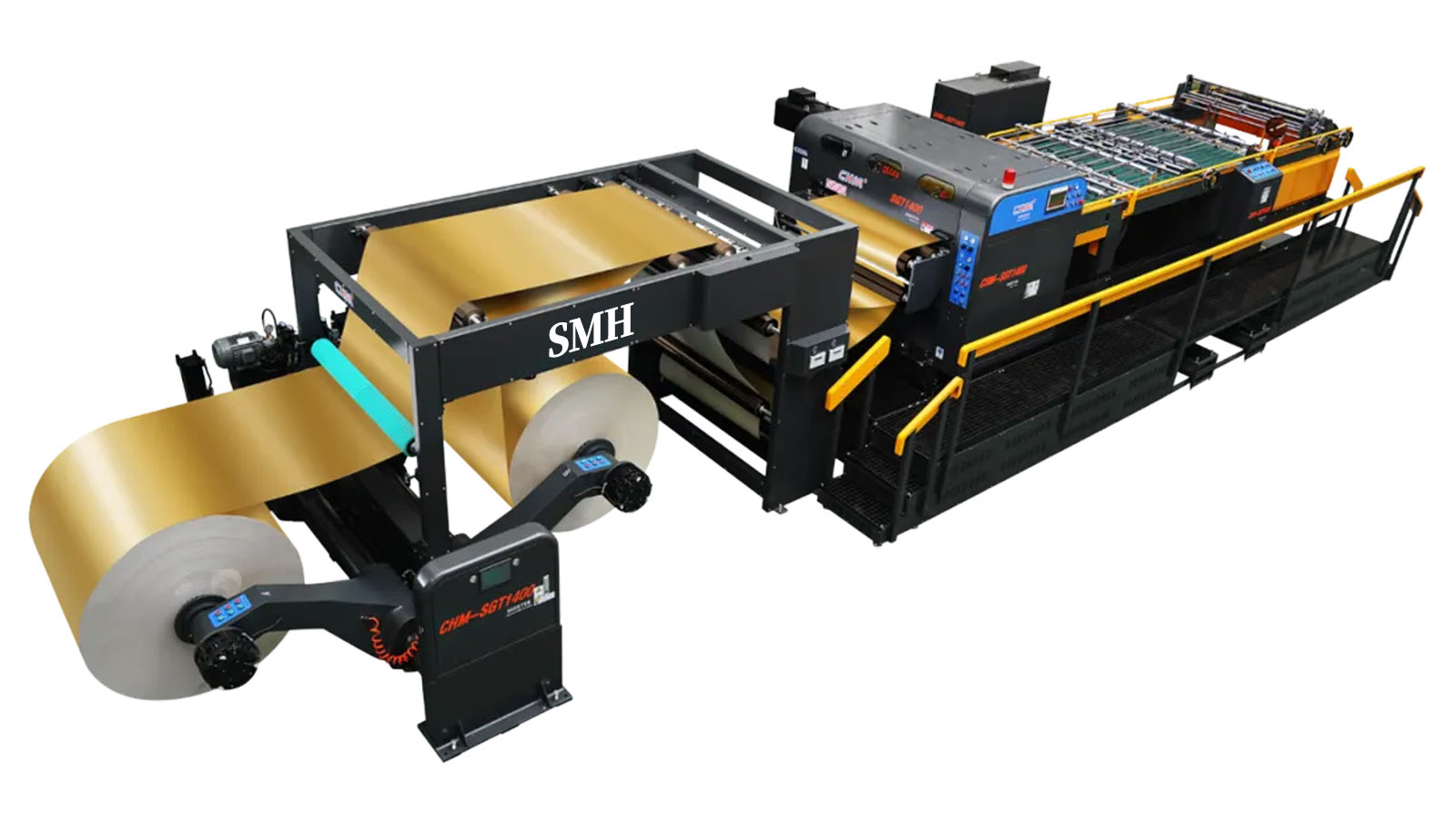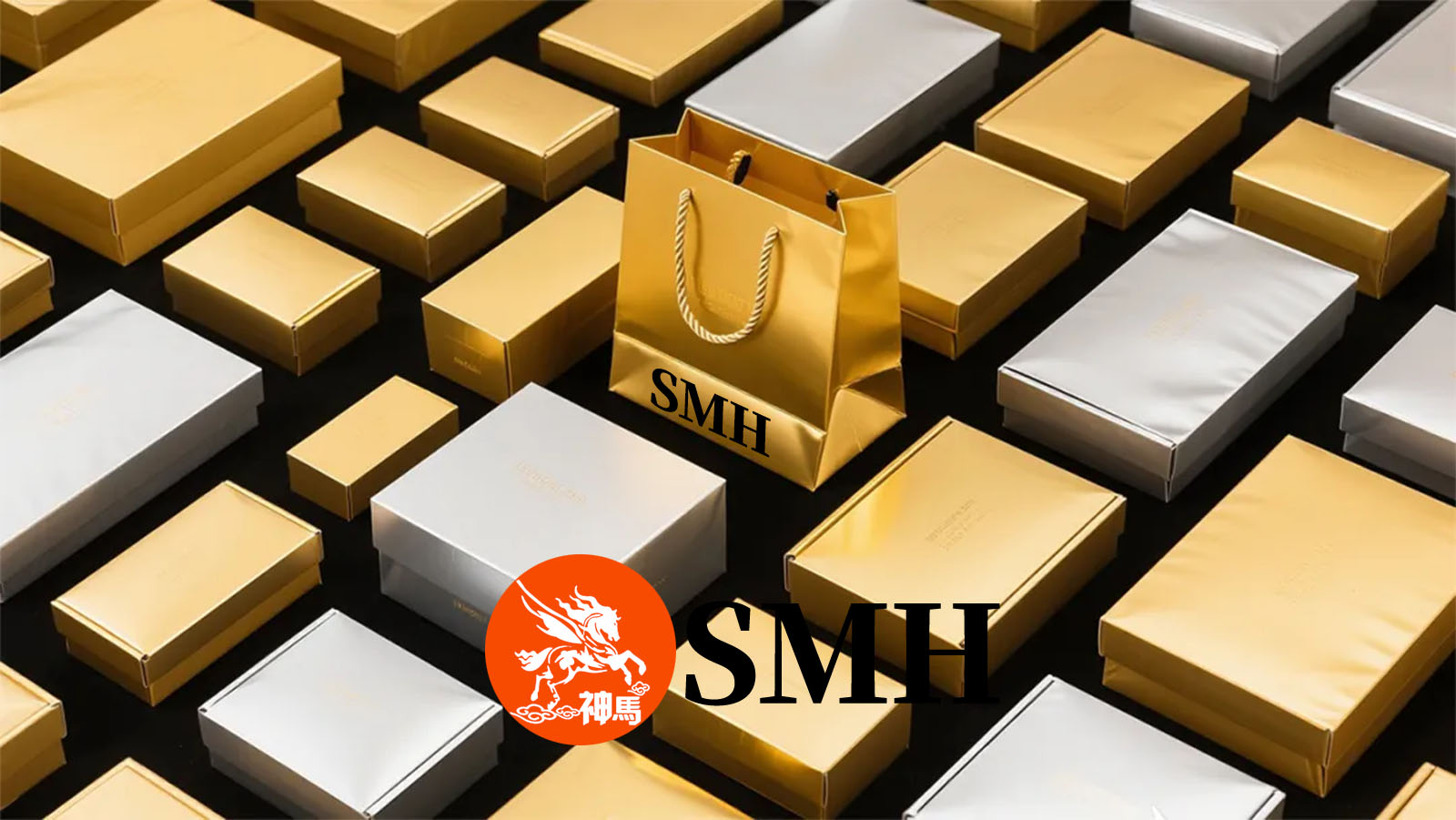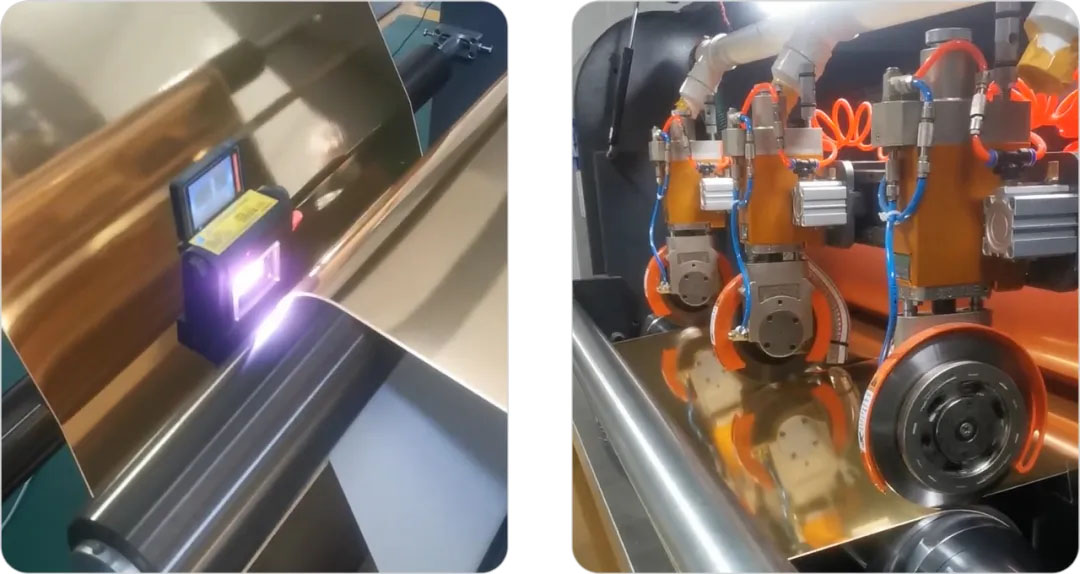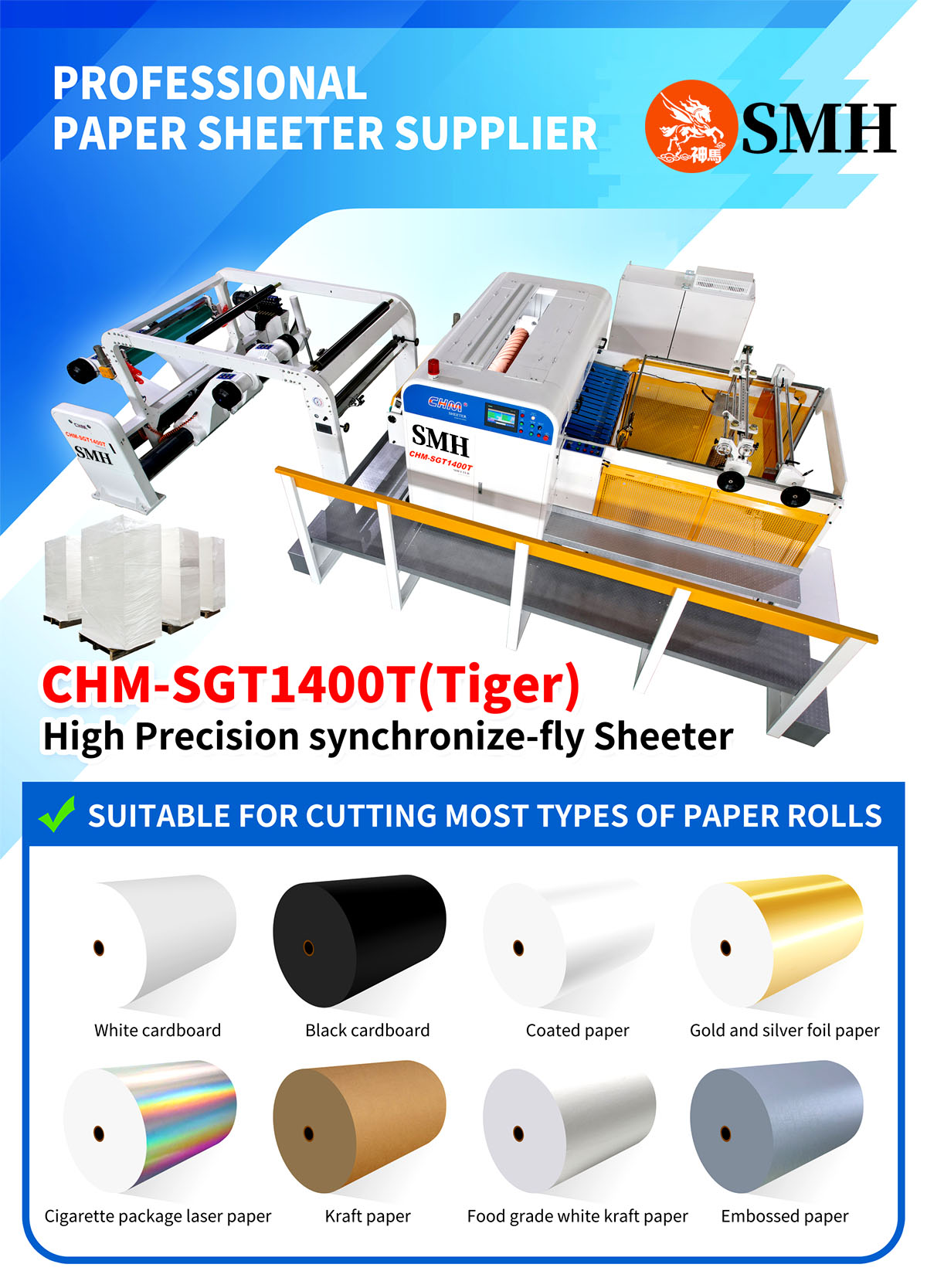Now I will explain clearly the “Entrepreneurial Opportunities of Paper cutting machines (sheeter/slitter) in various countries” : what to do to make money, in which countries it is easy to do, how to implement it, how to calculate the input-output ratio, and how to avoid common pitfalls. The content should be written based on the CHM/ slitting scenarios you are familiar with, taking into account both copperplate/double-sided adhesive/white card, packaging and cultural paper lines.
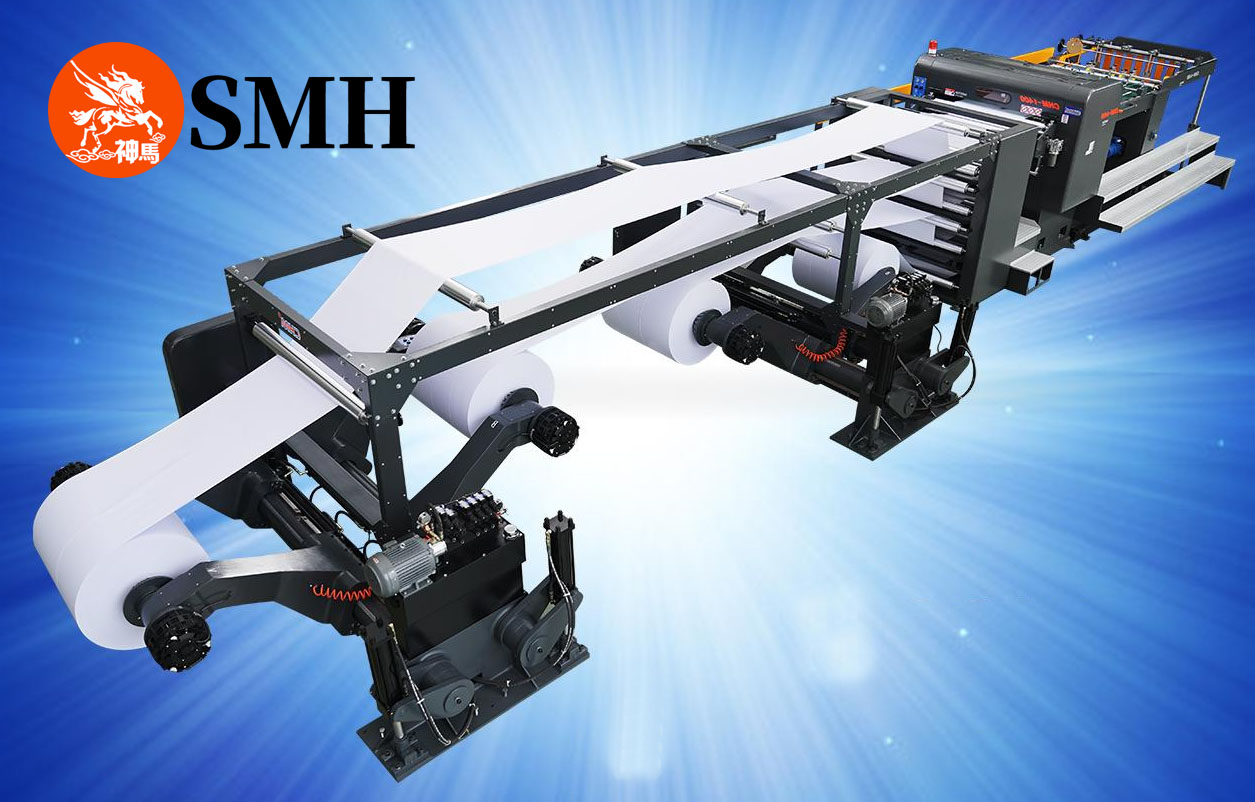
I. How to Make Money from This Business (3 Models)Toll Converting.
The customer provides jumbo rolls, and you charge by ton/knife count/width.
Good cash flow and low inventory pressure. Processing fee per ton is $40 – $120 per ton (depending on the country).
Suitable for: printing factories, paper traders, and packaging factories with excess capacity during peak seasons.
Buy + Cut + Sell

Stock up on roll paper by yourself, cut it into small rolls or finished paper and then sell them.
Gross profit sources: Price difference in roll paper purchases + slitting added value + delivery time/small-batch premium.
Suitable for: Markets with tight supply or a large number of urgent orders (Middle East, Africa, South Asia).Integrated warehousing and distribution Overseas Hub Set up a local warehouse (shared warehouse is also acceptable) to accept fragmented orders with “next-day / 48-hour delivery”.
The price is slightly high, but the turnover is fast and the repurchase rate is high.Suitable for transshipment ports such as Dubai, Istanbul, Lagos, and Sao Paulo.
Ii. National Opportunity Map (2025 Entrepreneurship Priorities)
Why is the rating country/region core opportunity now recommended for the product/knife path
⭐⭐⭐⭐⭐, UAE (Dubai)/Saudi Arabia regional distribution + high-end printing/white card free trade convenience, radiating to the Middle East/North Africa/South Asia, urgent order multi-plate/white card/high smoothness double glue; Customized according to width
⭐⭐⭐⭐⭐ Turkey (Istanbul) connects Europe and Asia, has large order flexibility, many local printing outsourcing, transfer orders from Russia and eastern Europe, copperplate, white card; Thin weight double glue
⭐⭐⭐⭐☆ There is a strong demand for educational printing and packaging paper in Egypt/Nigeria/Kenya. Local production capacity is insufficient, and there are pain points in terms of funds and delivery time. 60-80g double glue, low grammage coating, white card
⭐⭐⭐⭐☆ India/Bangladesh/Pakistan price sensitive but large quantity, mid-to-low-end massive + peak season hotspots, low grammage double glue/coating; Slitting efficiency takes priority
⭐⭐⭐⭐☆ dependence on imports from Mexico/Brazil/Chile + fluctuations in cross-border e-commerce packaging exchange rates, derivatives of broken orders of white cards/kraft cards, label face paper
⭐⭐⭐☆☆ Poland/Romania/Czech republic accept orders from Western Europe. High delivery time requirements. Green certification + stable supply. Premium available. FSC double-coated/copperplate, short format art paper
⭐⭐⭐☆☆ Vietnam/Thailand/Indonesia has strong manufacturing capabilities, and there are many peripheral orders. The competition and cooperation with Indonesia ‘s production capacity are obvious. The distinctive features are the differences in width and special weight
⭐⭐☆☆☆ high quality, high price pressure, mature market from the United States/Canada/Japan/South Korea + local competition, high-end FSC, digital printing paper small batch quick return
⭐⭐☆☆☆ short-term policy of coexistence of volume and price in Russia/central Asia/high settlement risk. Copperplate, newsprint, compliance and settlement priority

Quick judgment: In areas with a high volume of urgent orders, imported rolls, and scarce local paper cutting, slitting services are most likely to become cash cows.
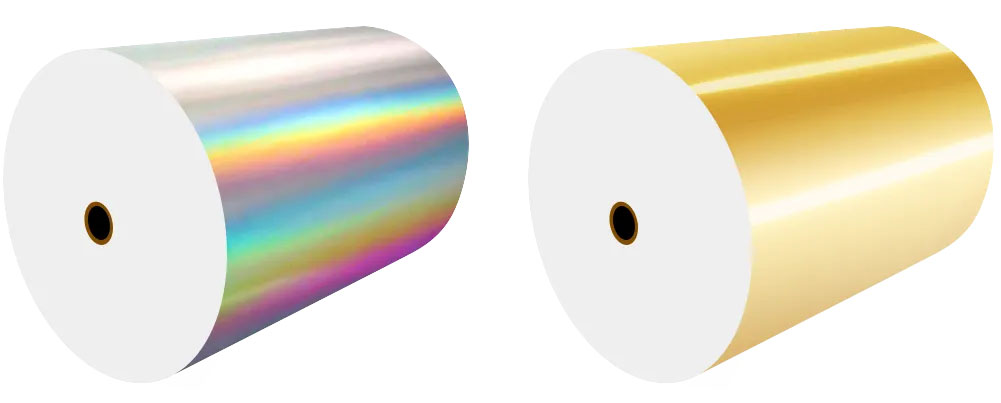
Iii. Equipment and Capacity Configuration (Practical Suggestions)
Starting from one line: A3-A0 format high-speed cross-cutting (sheeter) + one rewinding and slitting (slitter rewinder).Target production capacity
Cross-cutting: 15-25 tons per shift /8 hours (depending on the gram weight and paper feeding cycle).
Rewinding: 8-15 tons per shift /8 hours (most customers are small-width, label/thermal sensitive, etc.).
Key points of configuration.Servo synchronization + automatic deviation correction; Online static electricity elimination Automatic packaging/palletizing improves turnover.
Local stock of cutting tools and consumables (round knives/flat knives, spacers, gaskets).
Compatible with 60-400G, it meets the switching requirements between white cards and thin paper.
Iv. Single-store Model and Payback Calculation (Conservative Basis)
Assumption (a combination of contract manufacturing and trading) :
Equipment investment: $220,000 (one high-speed cross-cutting machine)
Production capacity: 20 tons per day × 22 days per month = 440 tons per month
Comprehensive gross profit (processing fee + price difference) : $60 per ton (conservative)
Operating costs (rent/labor/energy consumption/tools/wear and tear) : $8,000 per month
Calculation (already calculated) :
Monthly gross profit: 20 × 22 × $60 = $26,400
Monthly net profit: $26,400 – $8,000 = $18,400
Payback period: $220,000 / $18,400 ≈ 12 months
Note: If “urgent orders + small batch premium” are placed in the Middle East/Africa, the overall gross profit can reach $80-120 per ton, and the payback period can be shortened to 7-10 months. In Japan, South Korea, Europe and the United States, it may be extended to 14 to 18 months (with higher labor, compliance and energy consumption).

V. Entry Path (From 0 to 1)
Step 1: Lock in “Anchor customers”
Leading paper traders, publishing and printing groups, and packaging plants from various countries have obtained the quarterly package volume and specification list.
Take the orders with “non-standard width/urgent and temporary orders/difficult to switch between thickness and thinness” as the entry point.
Step 2: Start with light assets (Recommended 3 to 6 months in advance)
First, do night shifts on rental machines, joint ventures or local processing plants’ production lines to practice the rhythm and calculate the losses with real orders.
Synchronous negotiation of shared positions (3PL), with a commitment to 48-hour shipping capacity.
Step 3: Land the equipment
After the orders run smoothly and the gross profit is stable, then the self-owned high-speed line will be launched.
The location is close to the port/free trade zone/printing park, with stable power supply and the ability to work night shifts.

Step 4: Service differentiation
SLA commitment: Goods will be dispatched within 48 hours after arrival at the warehouse, and urgent orders within 24 hours.
Digitalization: Online ordering (width/weight/number of cuts), visualized kanban, barcode traceability;
Financial portfolio: Offer a payment period of 7 to 21 days to high-quality customers, and use credit insurance or factoring for ourselves.
Vi. Key Points and Quotation References for Implementation in Various Countries (Ready to Use upon Implementation)
Dubai/Saudi Arabia: Smooth import channels, processing fees $60-100 per ton, many urgent orders for white card/copperplate. Arabic labels and sand-proof storage facilities need to be implemented.
Turkey: There are many orders from Europe and frequent order changes. Processing fees range from $50 to $90 per ton. Pay attention to electricity price fluctuations and lira settlement.
Egypt/Kenya/Nigeria: Electricity and spare parts are key, $40-80 per ton; It is recommended to have both diesel and mains power on hand, and always keep blades and bearings at hand.
India/Bangladesh: Large quantity and tight price, $30-60 per ton; Compete in terms of rhythm and yield rate, and bind with local traders.
Brazil/Mexico: Tariffs/exchange rates have a significant impact, $60 – $100 per ton. Partial delivery (weekly dispatch) is resistant to exchange rates.
Poland/Romania: FSC premium orders are available, ranging from $70 to $110 per ton. Compliance, safety standards and dust control must be in place.
In the United States, Japan and South Korea, the customer requirements are strict. The price ranges from $80 to $140 per ton. However, the costs for certification, safety and labor are high. It is advisable to focus on high-end short-term orders.
Vii. Product and Customer Structure Avoid “Cutting without Profit”
Education/Teaching Materials: 60-80g double glue, large quantity; Do the weight and stiffness stability tests in advance.
Commercial printing/advertising: Copperplate, art paper, high profit, many non-standard widths.
Packaging and white card: 230-400g white card/gray background with white, small order volume, good room for markup.
Label/thermal/self-adhesive base paper: More fine tension and edge quality are required, and sufficient cutting tools and spacers are needed.
Digital printing paper: Narrow format, expensive; A small amount of stock available + fast delivery, high profit margin replenishment.
Viii. Risk Control List (Read Before Falling into Traps)
Yield rate: Target ≥ 98.0%; The recycling and loss of leftover materials are included in the quotation.
Cutting tool consumables: Check the cost of cutting tools per ton to two decimal places. When switching between thin and thick layers, the wear curve should be recorded.
Dust and static electricity: Add static electricity elimination + centralized dust removal; otherwise, the explosion and waste rate will increase at high grammage/high vehicle speed.
Power/Night Shift: Continuous night shifts are most prone to accidents and explosive failures. Mandatory inspection and team competition are set up.
Compliance: Pay attention to safety protection, noise and dust indicators in Europe, America, Japan and South Korea. Pay attention to fire safety and warehouse insurance in the Middle East/Africa.
Ix. 100-day Implementation Action Plan (Single-point Trial Operation)
D1-d10: Site selection (close to the port/free trade zone/printing park), sign a shared warehouse + night shift joint operation line; Collect the specifications of the TOP50 potential customers.
D11 – D30: Test run order (≥200 tons), curing tool/cycle time/edge material recycling process; Launch the quotation template.
D31 – D60: Sign 2-3 quarterly package volumes (total ≥800 tons per quarter), lock the core specification tool paths and inventory.
D61 – D90: Access the self-owned expressway line. SLA assessment: 48-hour delivery achievement rate ≥95%. Increase the monthly processing volume to 400-600 tons.
D91 – D100: Review gross profit per ton/yield/turnover loss; Decide on the replication and expansion plan for the second region.
Here are two templates that you can use directly now
A. Quotation Framework (Example)
Billing: Processing fee $per ton + tool change fee $per time + Urgent order surcharge $per ton (24-48 hours)
Packaging: Film wrapping/moisture-proof + palletizing $/ pallet (optional)
Logistics: Local delivery $per vehicle or by kilometer
Payment: Monthly settlement within 7 to 21 days (cash/guarantee for the first order), covered by credit insurance
B. First Order Development Script (Example)
We focus on non-standard width and urgent orders and can deliver within 48 hours. Please give me a trial order for the most difficult specification to cut at present (20-30 tons). If the yield rate is ≥98%, there will be no charge. We offer roll traceability numbers and immediate cutting upon arrival at the warehouse to ensure your printing schedule.
